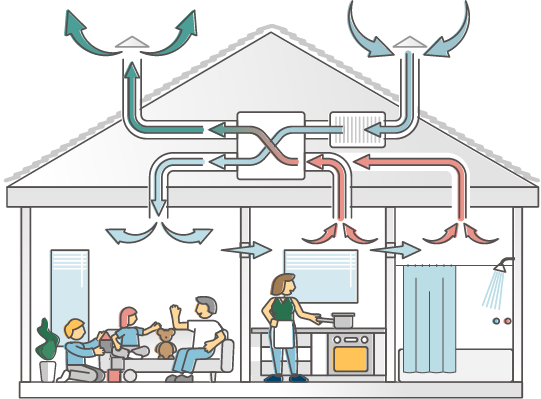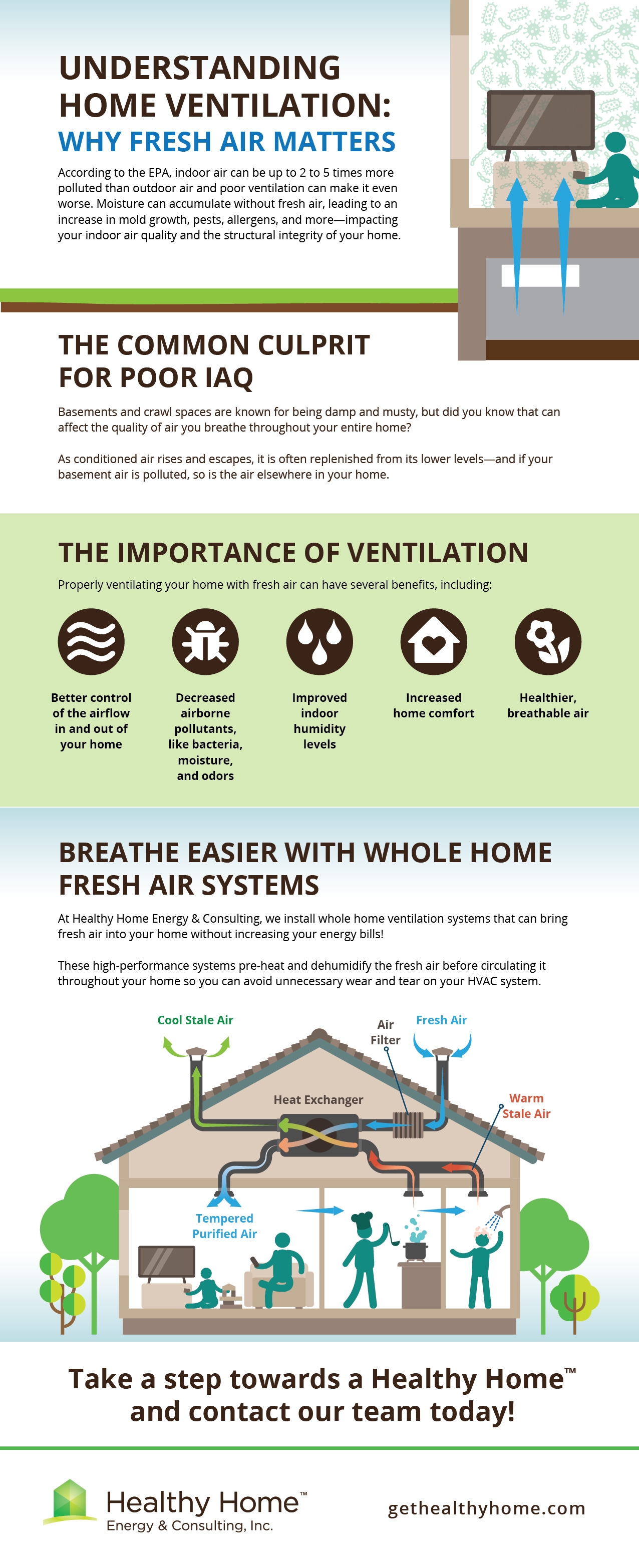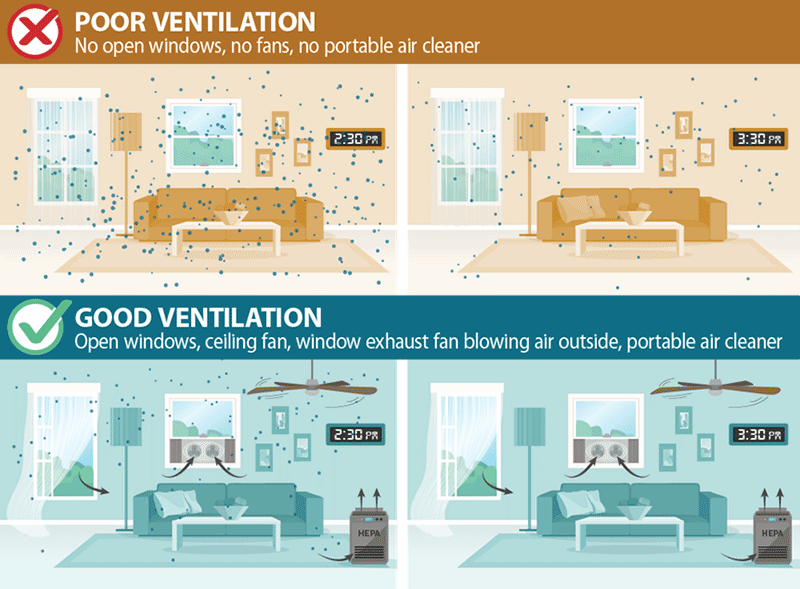A Seasonal Maintenance Guide for Home Ventilation Melbourne
Wiki Article
Understanding the Relevance of Home Air Flow for a Healthier Living Setting
Home air flow plays a necessary function in keeping a healthy and balanced living setting. It facilitates the exchange of exterior and interior air, which is necessary for improving air quality. Without proper air flow, homes can come to be breeding premises for contaminants and allergens. The effects of poor air flow can be significant. This raises the inquiry of how homeowners can effectively apply ventilation approaches to safeguard their health and wellness and health. Understanding these methods is essential.
The Fundamentals of Home Ventilation
Home air flow works as an essential part of interior air high quality and comfort. It involves the procedure of exchanging stale interior air with fresh exterior air, consequently minimizing humidity and controlling temperature level. Proper ventilation systems can include all-natural approaches, such as open home windows and vents, in addition to mechanical systems, such as exhaust followers and air exchangers. Reliable home air flow assists avoid issues like interior mold development and the accumulation of unsafe fragments. It likewise enhances total energy performance, as well-ventilated spaces can preserve comfortable temperature levels with less reliance on home heating and cooling systems. Understanding the fundamentals of home ventilation is crucial for home owners looking for to create a much healthier living setting for themselves and their families.
Usual Sources of Indoor Air Pollution

Lots of may not recognize it, interior air pollution can stem from various resources within a family. Typical contributors include volatile organic compounds (VOCs) given off from paints, solvents, and cleaning items. House appliances, such as gas ovens and fire places, can release hazardous gases like carbon monoxide gas and nitrogen dioxide. Furthermore, mold and mildew and mold grow in moist areas, releasing spores that impact air high quality. Family pet dander, dust termites, and plant pollen can accumulate inside your home, further intensifying pollution levels. Cigarette smoking indoors produces toxic chemicals that remain airborne. Developing materials, consisting of asbestos and formaldehyde, can off-gas harmful materials. Acknowledging these resources is crucial for maintaining a much healthier interior atmosphere and promoting effective ventilation methods.
Health Consequences of Poor Ventilation
Interior air contamination can have substantial health implications, particularly when air flow is poor. Poor ventilation can lead to the build-up of hazardous pollutants, such as volatile organic compounds, mold, and particle issue. This buildup might lead to respiratory system concerns, consisting of asthma, allergies, and chronic obstructive pulmonary disease. People may experience signs and symptoms like frustrations, exhaustion, and irritability of the eyes, nose, and throat. Vulnerable populaces, such as youngsters and the senior, are at higher risk for severe health impacts. Long-term direct exposure to badly aerated environments can additionally contribute to much more serious problems, including heart diseases. Making certain proper ventilation is important for preserving a healthy and balanced living atmosphere and lowering the risk of health problems linked with indoor air contamination.Reliable Ventilation Strategies for Your Home
Correct ventilation is crucial for keeping a healthy and balanced indoor atmosphere, and applying efficient techniques can considerably improve air top quality. Property owners can start by ensuring that exhaust followers are installed in restrooms and kitchens to remove excess dampness and odors. Opening up windows consistently enables fresh air to circulate, especially throughout mild weather condition. In addition, utilizing air purifiers with HEPA filters can assist record air-borne contaminants. For homes with home heating and cooling systems, keeping a/c systems and altering filters on a regular basis is important for peak efficiency. Incorporating all-natural ventilation methods, such as cross-ventilation, can likewise enhance airflow. Ultimately, securing any leaks in home windows and doors protects against unwanted drafts, which can interfere with regulated air flow, inevitably bring about enhanced indoor air high quality and comfort.Keeping Optimum Air Top Quality Year-Round
To preserve suitable air quality year-round, homeowners should take on a proactive strategy to managing their interior atmosphere. Frequently keeping an eye on interior air top quality is crucial; this consists of checking for toxins such as dust, mold, and volatile organic substances (VOCs) Implementing effective air flow systems, such as exhaust followers and air cleansers, can considerably useful link lower air-borne impurities. In addition, regular upkeep of HVAC systems assurances peak efficiency and air flow. Home owners ought to likewise consider humidity levels, as extreme wetness can bring about mold and mildew development. Seasonal adjustments might require adjustments in air flow techniques to accommodate varying outside air high quality. By prioritizing these practices, house owners can create a much healthier living space, advertising total well-being for all passengers throughout the year.Often Asked Questions
How Can I Tell if My Home Demands Better Air Flow?
To determine if a home needs better ventilation, one should observe signs such as consistent moisture, mold and mildew development, moldy smells, condensation on windows, or raised allergic reaction signs and symptoms, suggesting insufficient air movement and potentially inadequate interior air high quality.What Are the Indicators of Poor Indoor Air Quality?

Can Houseplants Improve Indoor Air Top Quality Successfully?
The effectiveness of houseplants in enhancing interior air high quality is disputed. While some studies suggest they can take in toxins and create oxygen, their general impact might be minimal contrasted to proper air flow and air filtering systems.Exactly how Frequently Should I Change My Air Filters?
The regularity of air filter modifications commonly relies on use and filter type. Usually, it is recommended to replace filters every three months, though households with pets or you can look here allergic reactions may require more regular modifications for suitable performance.Are There Any Type Of Certain Air Flow Systems for Allergic Reaction Sufferers?
Many ventilation systems, such as HEPA-filtered units, properly lower irritants in the air. Home Ventilation Melbourne. These systems catch family pet, pollen, and dust dander, giving allergy patients with a cleaner, healthier indoor environment while managing air top quality properly
It helps with the exchange of indoor and outside air, which is essential for enhancing air high quality. Home air flow offers as an important part of indoor air quality and comfort. It involves the procedure of my review here exchanging stale interior air with fresh outdoor air, thereby minimizing humidity and controlling temperature. Indoor air pollution can have significant health ramifications, particularly when ventilation is insufficient. Appropriate air flow is important for preserving a healthy and balanced indoor setting, and carrying out efficient techniques can significantly improve air quality.
Report this wiki page